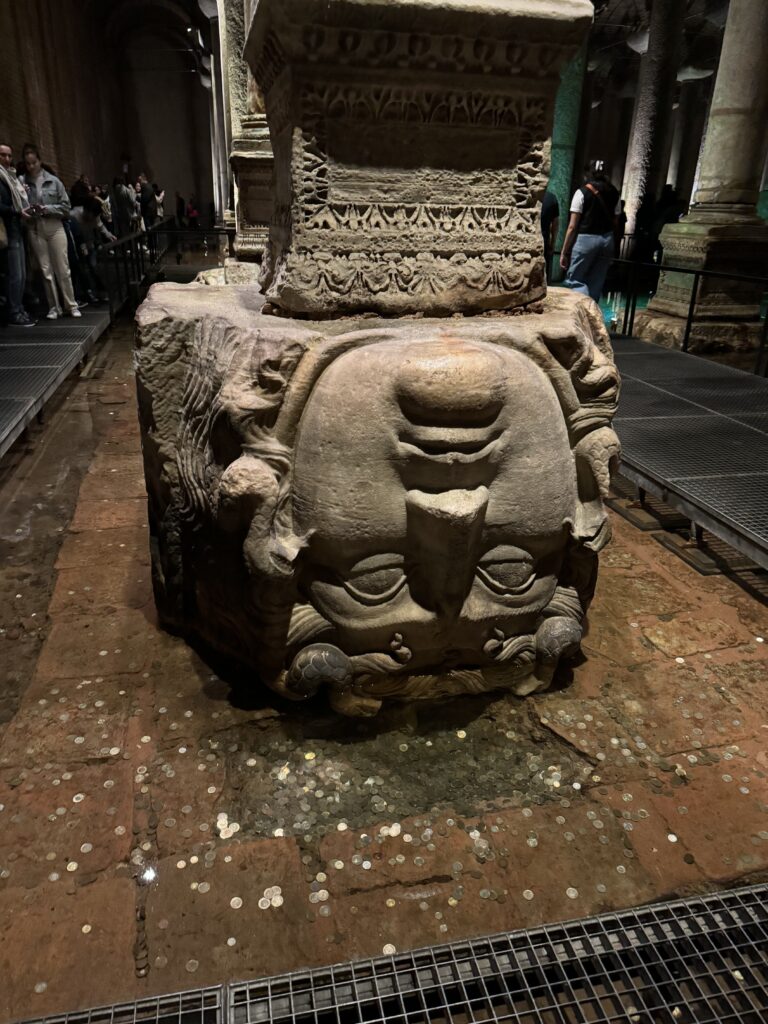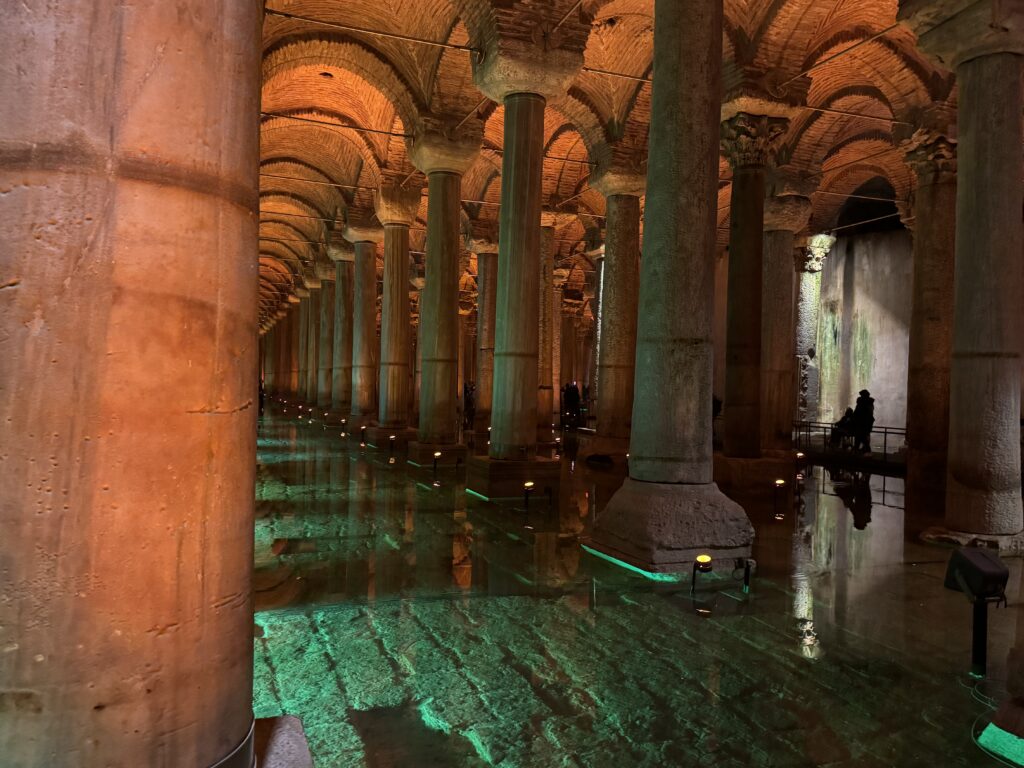Where did you get your Sheepskin?
If you’re over 60, you may remember the expression “Getting a sheepskin”. This refers to getting a degree or diploma.
Did you know that animal skins were actually used for writing and were instrumental in the evolution from scrolls to books. The finest parchment, was made from lambs or calves and was called vellum. The word parchment is derived from the name of the Ancient Greek city, Pergamon, the hub of parchment production in the second century BC. Pergamon is located in Anatolia, Turkey, the current city, Bergama, is where we meet a lovely couple who are masters in the ancient art of making parchment.

To prepare sheepskins for stretching, the skins are first pickled for several days. Then the skins are depickled, scraped, limed and squeezed to remove moisture. Skins are tied to a wooden frame at 21 points around the edge of the skin, and allowed to dry 5-6 days. During this time, the connectors are periodically tightened. It’s a tedious process requiring foul smelling vats, patience, strength and attention to detail.
As a further point of trivia, it took 300 sheep to print one Gutenberg bible
Dolmabahce Palace
Turkish sultans had resided in the medieval Topkapi Palace located in the Old City of Istanbul since 1460. Turkish influence declined over three centuries due to European expansion into Turkish markets, a realignment of the internal power structure, lack of a naval force and corruption.

The 31st Sultan decided the best way to improve the prestige of the Ottoman Empire was to built a magnificent palace in the style of Versailles. The Dolmabahce Palace was commissioned in 1843 and cost 31 tons of gold, $1.9 billion in 2021 terms.
The palace meant to signal the rebirth of the empire was the final nail in its coffin. The construction effectively bankrupted the country. The empire defaulted on its European loans. In 1881, the lenders imposed financial control over the « sick man of Europe «. A bureaucracy of 9,000 oversaw the collection of Ottoman taxes and the repayment of the defaulted monies.

There are magnificent rooms in the palace. It is still home to the largest chandelier in the world.
The design is awe inspiring but I didn’t find it cohesive or aesthetic. The opulent rooms are connected by mundane corridors. The palace is located on the banks of the Bosporus but few of the rooms take advantage of the view. Officially, the style of the palace is a blend of baroque, rococo and neoclassical. Whereas the Topkapi Palace showcased beautiful regional tiles and rugs, the Dolmabahce is decorated in gold, crystal and mahogany. 14 tons of gold were used to gild the ceilings.
The palace is a museum. It’s worth a visit if only as a reminder of the grandiosity of a by gone era.
Traveling on High Holy Days
Our last day in Turkey was delightful. The weather was warm and we wondered through a few neighborhoods on the Asian side. The Asian side of Istanbul feels very European. The architecture and the inhabitants are more eclectic. There are lovely patisseries, small shops, and local grocers. The trees in one area were lined with lindens, in another area there were flowering Judas trees.

Our tour leader had a great deal of courage as he decided to head back to the European side by taking a public ferry. There were 18 in our group. The ferry terminal was the most crowded queue I had ever experienced. The larger men in the group formed a human wall as we neared the turnstiles. It was effective. We boarded the ferry and had a lovely crossing.
Fred and I decided to walk back to our hotel from the terminal. The bridges and paths that I had walked in the early morning were a mass of people. It took nearly 15 minutes to cross under the Main Street, a distance of less than 100 yards.
Protests
Turkey is a Muslim country and supportive of Gaza and Hamas. However, there was very little evidence of this. I did see some chalked slogans on the sidewalks in Istanbul, Anatalya and Gürüp, but there weren’t any protest or demonstrations. Mehmet said Turkey doesn’t tolerate protests or demonstrations, even when they support the government position. During Erdogan’s time in office, since 2002, the press has been stifled and many opponents have been jailed. Turks are hopeful that based on the result of the most recent election, the secular CHP party won the majority of the vote, democracy will return.
Basilica Cistern

Built in 532, the cistern was constructed with 336 columns salvaged from ruin temples. There are a variety of styles represented. The cistern was built on the site of a Roman temple by 7,000 slaves. It is surrounded by a thirteen foot thick wall coated with water proof mortar.
The Basilica cistern was built after the christianisation of Constantinople. Important symbols of pagan rule, such as the Medusa, where mounted upside down. Some scholars believe this was done to negate the evil power of her gaze while others believe the use of the Medusa in this matter was done to belittle pagan symbolism.
The cistern has been enhanced with lighting and sculpture. The cisterns were the backdrop in the several films, perhaps best known was From Russia with Love (1963)

Miscellaneous
Turkey has the youngest population compared to the entire European Union. The average age in Turkey is 31 years, and only 9% of the population is over 60 years old.

Dogs are ubiquitous in Istanbul. The stray dogs are spaded and tagged by the city. These animals are cared for by shopkeepers and local communities. One stray has its own instagram account. You can follow him as he explores the city.
Like Rome, Istanbul was built on seven hills. But this was not a coincidence. In the Byzantine Empire, the capital was specially built in such a way as to call it New Rome. All seven hills are of historical importance, with impressive mosques and magnificent palaces.
The picture below shows the tulip beds on Pearl Street in Boulder. The tulip was a common motif in ceramics and rugs throughout the Ottoman Empire. It’s believed an ambassador from the Austrian Empire serving in the court of Suleyman the Magnificent brought the tulip back to the royal European court in the mid 16th century.

The word “turquoise” in translation means “Turkish stone”. This brilliant mineral came to Europe from the East through Turkey and is one of the oldest gemstones. It was first used as amulets by Turkish soldiers.
The national sport of Turkey is oil wrestling. The fighters are pre-doused with oil, and then go to the ring.
Turkey is the largest producer of hazelnuts. It accounts for approximately 75% of the world’s supply of these nuts. So if your a Nutella fan, you can thank the Turks.
